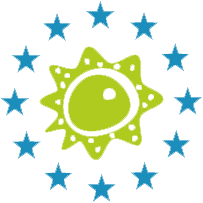Practical information for Warsaw
Basic information
Poland is a member of the EU and participates in the Schengen area.
Currency and payments: The currency of Poland is the Polish Złoty (PLN/zł; 1 PLN = 0,23 EUR). Card payments are very common, so you don't necessarily need cash to get around Warsaw. Some restaurants accept card payments only. Transactions abroad may be subject to special rates and fees, so check with your bank to avoid additional charges.
Language: The official language of Poland is Polish; however, in big cities most people, especially young people, can speak English.
Internet: Free Wi-Fi is commonly available in many public spaces, including museums, restaurants, cafes, and some trains.
Safety: Warsaw is a safe city. While pickpocketing and theft are rare, always make sure to keep your belongings secure.
Weather: The weather in November is quite cold and usually ranges between 0 and 8 degrees Celsius. Rain is possible and sometimes even snow.
Power plugs and sockets: Poland uses power plugs and sockets of Type C and Type E, with a standard voltage of 230 V and a frequency of 50 Hz.
Tap water is safe to drink.
Getting to Warsaw
By train
There are direct train connections between Warsaw and the following European cities: Vienna, Salzburg, Berlin, Frankfurt Oder, Prague, Bratislava, Vilnius, and Budapest. To help minimise the environmental impact of ESCAIDE we strongly recommend opting for green travel when possible. To buy train tickets to and from Warsaw, go to the official PKP Intercity website.
By plane
There are two international airports in the Warsaw area: Warsaw Chopin Airport (WAW), located in the city, and Warsaw Modlin Airport (WMI), about 40 km from Warsaw.
From Warsaw Chopin Airport, you can easily reach the city centre by public transport, including buses (175, 188) and city trains (S2, S3), as well as by taxi and ride-sharing services such as Uber, Bolt, or FREENOW.
From Modlin Airport, you can take either a FlixBus or the public transport option provided by Koleje Mazowieckie, which includes a short bus ride to Modlin train station and then a train from Modlin to Warsaw. Alternatively, you can take a taxi, though it might be expensive due to the long distance to Warsaw city centre (about 40 km).
From other Polish cities
There are multiple other airports in Poland, the most popular being in Katowice, Kraków, Gdańsk, Poznań, and Wrocław. If you arrive at any of these airports, you can reach Warsaw by train. To buy train tickets in Poland, go to the official PKP Intercity website.
Getting around the city
Public transport
The city's public transport is a well-connected network of buses, trams, two metro lines, and city trains. To learn more, visit the official Warsaw Public Transport website.
Public transport functions well and is affordable, with a single 75-minute ticket costing 4,40 zł (about 1 euro). You can buy public transport tickets at cashless ticket machines located in each bus and tram, as well as at the entrance to each metro station. You can also buy tickets through several different mobile apps, but this is not necessary as ticket machines are available in each public transport vehicle.
City bikes and scooters
There are also very affordable Veturilo city bikes, which usually remain available until the end of November. When biking, stay cautious, and when crossing the street, always make sure cars can see you, even when crossing on a green light.
Electric scooters are also available for rent from several providers.
Walking
Warsaw is a walkable city, so if you stay in the centre, you can get by with just walking.
As a pedestrian, be aware of bike lanes which are designated with bike symbols painted on the pavement, street signs, and sometimes red colour.
What to see in Warsaw
- Old Town: The historic heart of the city, known for its colourful houses and unique atmosphere. Part of UNESCO World Heritage list. Official website
- Royal Castle: The former seat of the rulers of Poland, carefully restored to feature royal apartments and a remarkable collection of art and historical pieces. Official website
- Browary Warszawskie: A lively revitalized area that combines historical brewery buildings with modern restaurants, cafes, and shops. Official website
- The Warsaw Rising Museum: An engaging museum that offers a deep dive into the city's wartime history, focusing on the 1944 uprising against Nazi occupation. Official website
What to eat
- Pierogi – Boiled dumplings filled with various ingredients like potato and cheese, meat, or sauerkraut and mushrooms
- Kotlet schabowy – Breaded pork cutlet, Poland's version of schnitzel, often served with potatoes and a side salad; nowadays available also in plant-based version in vegan restaurants
- Pączki – Polish donuts, traditionally filled with rose petal jam and topped with icing and orange zest
- Sernik – Polish cheesecake
- Zapiekanka – Open-faced baguette with mushrooms, cheese, and various toppings baked in the oven
Useful phrases in Polish
- Dzień dobry (jeh-n DOH-bry) – Good morning
- Do widzenia (doh vee-DZEN-ya) – Goodbye
- Dziękuję (jen-KOO-yeh) – Thank you
- Przepraszam (psheh-PRAH-sham) – Excuse me/sorry
- Nie rozumiem (nyeh roh-ZOO-myem) – I don't understand
- Nie mówię po polsku (nyeh MOH-vyeh poh POHL-skoo) – I don't speak Polish
Emergency numbers
112: Universal emergency number for all services
999: Ambulance services
998: Fire brigade
997: Police

